If you’ve followed my blog since I started posting in July 2021, you probably know how much our backyard wildlife habitat means to me. And how I am not someone with a “green thumb.” You may recall that starting this blog evolved from the idea of doing “50 home projects in 50 days.”
One of those projects was to muck out our pond, something we hadn’t done since installing it a decade ago. Last weekend, we finally got around to it. Since then, I’ve been pondering how enhancing our suburban retreat ties into the concept of getting unstuck.
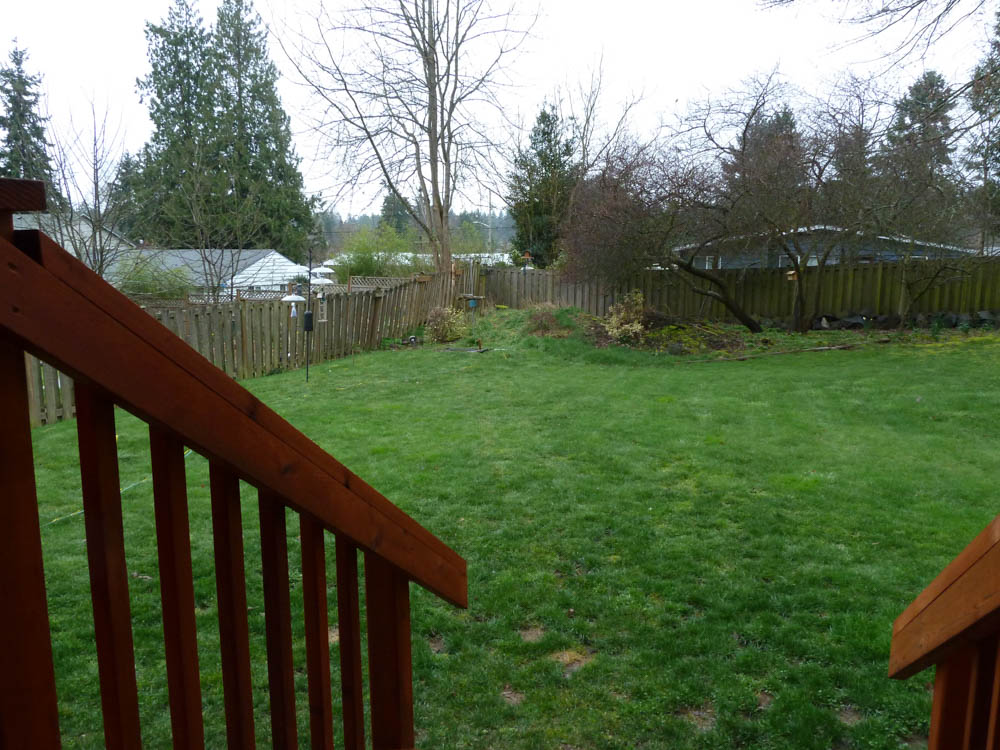
Planting a Hedgerow
In 2011, we wanted to attract wild birds to our backyard feeders so we could photograph them up close. A water feature and native plants seemed like the best lure. I’ve always enjoyed the sound of running water, so we planned to include a mini-waterfall. After weeks of landscape design and research about plants native to the Pacific Northwest, we got to work.
During a long weekend in March, my husband and I prepared the soil, creating a zen-like flow to the hedgerow outlined with interlocking red brick. We spaced the larger shrubs several feet apart: red-flowering currant, Indian plum, Ninebark. Snowberry, Ocean Spray, Mock orange. Serviceberry and blueberry. We chose as groundcovers wild strawberry and crinkle-leaf creeper plants.
In two days, we turned the south part of our backyard into the infant hedgerow pictured below, leaving space to install a pond when it got warmer. We still had more research to do to find out how to make one work.
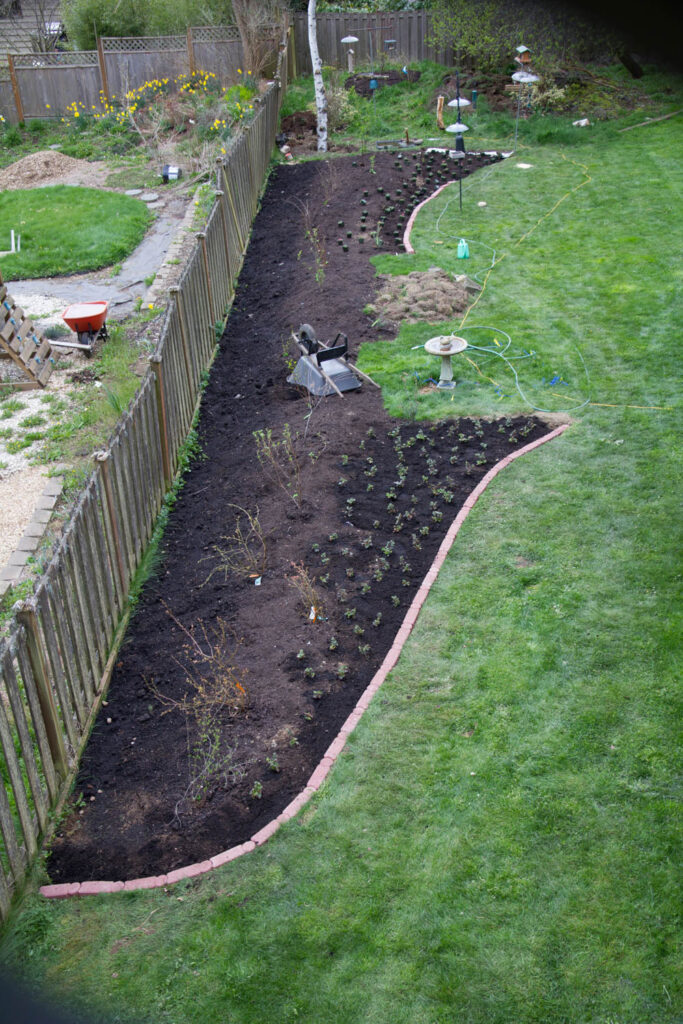
Installing a 3-tiered Pond
Phase two took place over Memorial Day weekend. First, we removed additional grass and measured how deep and wide the pond should be. Once we dug out the dirt and mounded it for the cascading waterfall, we lined the hole with carpeting to protect it from added rocks, root punctures, and critters with sharp claws.
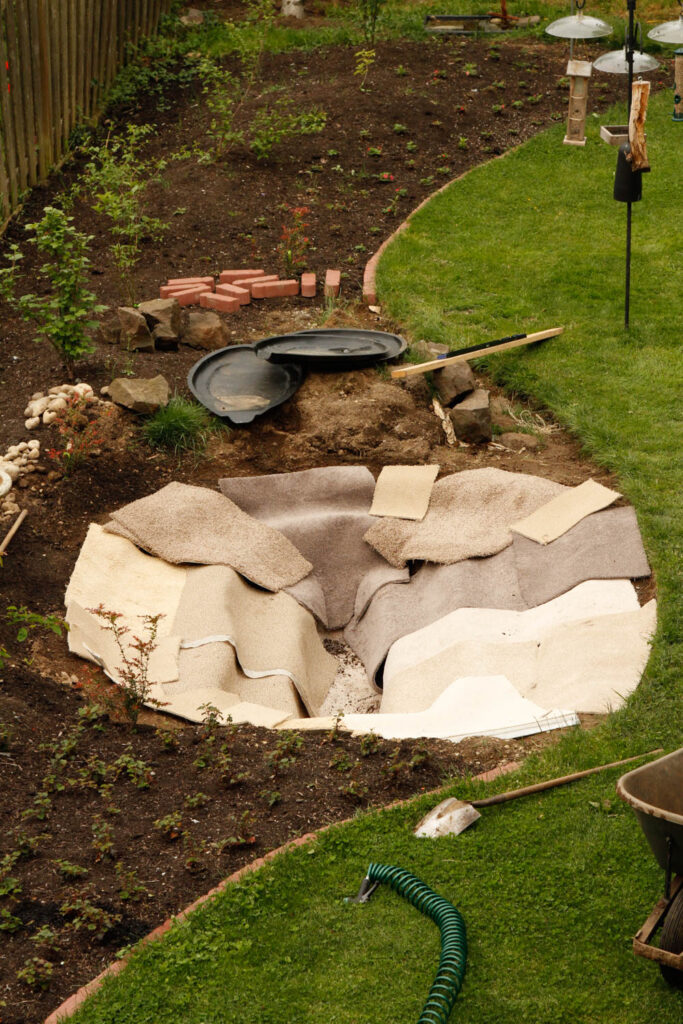
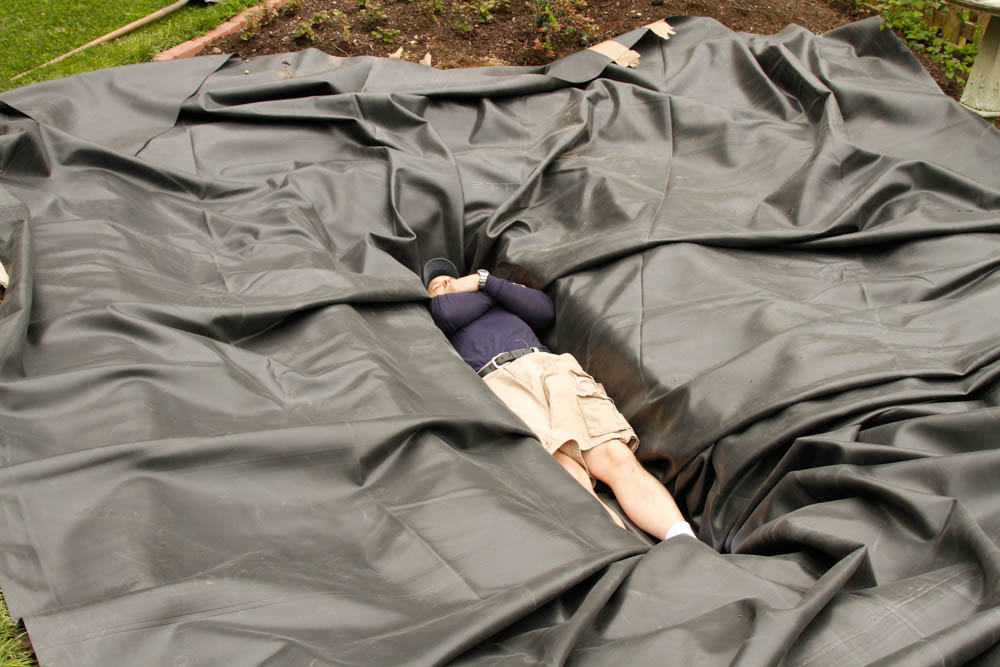
After placing the pond liner, we filled the depression with water and added gravel. The decorative pebbles gave it a natural look and provided a variety of depths for birds of different sizes to stand on for bathing. Next, we hooked up the fountain so we’d have running water, both for our enjoyment and to attract birds flying over.
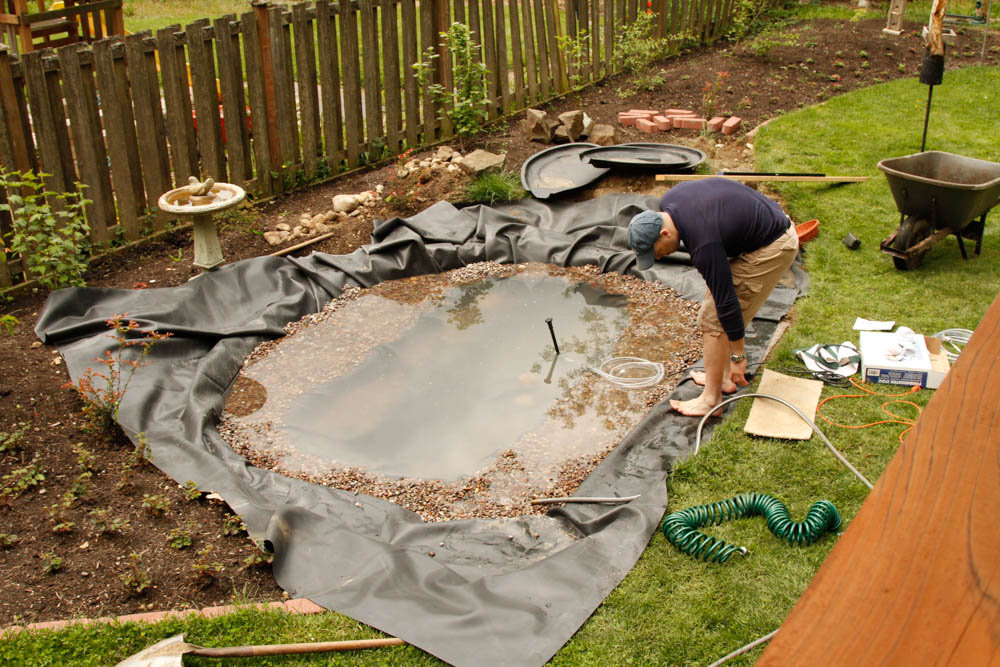
Our daughter helped fill in gaps between pavers with gravel. We built a mound for our three-tiered recycling waterfall and removed the excess liner material. After adding several water lily plants and larger rocks to mask the pond liner, we were ready to turn it on.

All we had to do was sit back and let Mother Nature do her growing magic.

Maintaining a Wildlife Habitat
Just as every home improvement project takes more time–and money–than budgeted, every goal has plenty of obstacles and pitfalls. Every story has a hero who struggles. And every goal, once reached, requires maintenance.
Whenever you take on a yard project yourself, especially if you’re not a landscape designer, it’s easy to overlook long-term maintenance costs. We love our water feature, but we’ve definitely had issues with it. Hoses clog. Unwanted algae forms on the surface. Plants die. Weeds take over. Leaves decay in the basin. As homeowners, these are all things we have to manage for years to come.
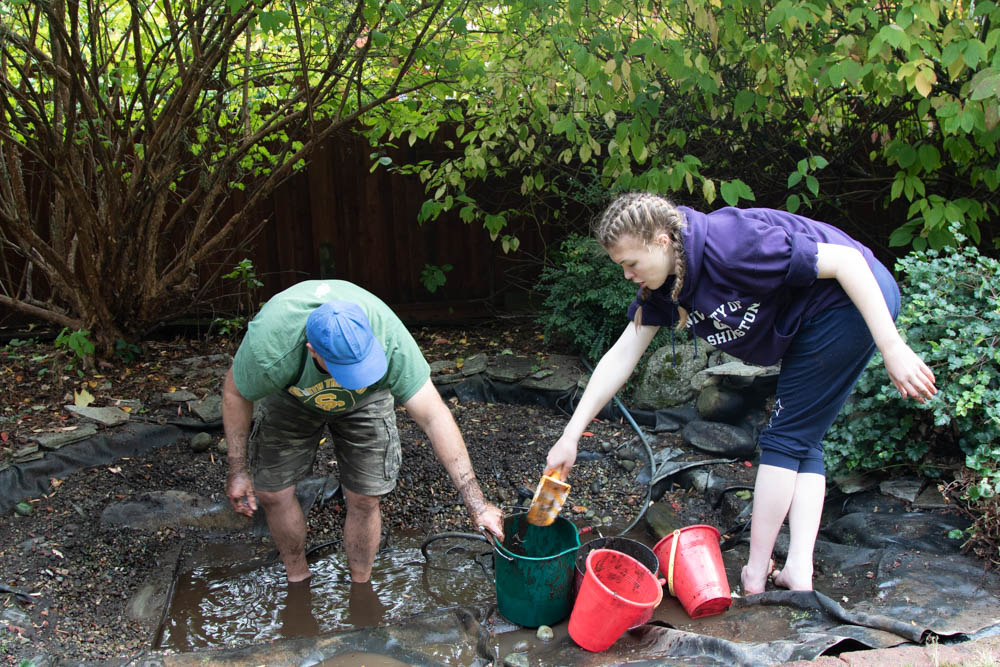

The biggest nuisance? Once every six months or so, raccoons (at least, we think) knock the fountain over, causing it to shoot water out of the basin and drain before we notice and turn off the pump. I promised that the next time it happened, I would clean out the pond and build a better foundation for the fountain before we refilled it.
That opportunity came last weekend. We all contributed to the clean-out effort, just in time for Mother Nature to blow off most of the surrounding leaves.
Wildlife Habitat Take-Away
I realize that cleaning out a pond is a tiny project and a problem of low importance in the grand scheme of things. After all, we’re living during a pandemic. Violence is increasing everywhere, our climate is changing dramatically, social injustice pervades daily experience, and political arguments divide our nation. All of these are mega-scale problems. Yet if I think about such issues, I freeze, powerless to change anything. We can’t live with powerlessness.
We must look at the macro level. What can a single person do? I can take good care of the things that matter most to me. Our backyard habitat has become a stopping point for migrating birds. It is a refuge for songbirds, woodpeckers, raptors, and hummingbirds. It attracts moles, voles, raccoons, possums, squirrels, and more. Keeping it healthy and picking up trash around the neighborhood are two things I can do locally, on a daily basis.
Take back the wild a weekend, a year, a decade at a time. By reflecting on the evolution of our habitat, I’ve seen in pictures what’s possible. If only a handful of us in every neighborhood made the same commitment to the environment, what a difference we could make.


I totally second Silvie Marie regarding you story-telling talent!
There is also something fascinating about the juxtaposition of your two posts this week: this one and the one on OcTraPiMo. Both “experiments” aimed at making the “world” a little better.
I do feel that they both “succeeded” albeit in clearly different ways. The expectations for the Backyard Wildlife Habitat were — it appears — fully defined, mostly controllable (assuming great expenditures of brain power, technical skills, and sweat), and beautifully realized. There’s something magic about elegance and function blending in seamlessly (regular maintenance notwithstanding 🙂 )!
I feel that, for OcTraPiMo, it was practically impossible to set expectations, that the goal might have been the experiment itself… to see what would “come out of it”. In essence, an experiment of a very different nature. One where Learning was more critical that Achieving? Learning being, of course, a stepping stone towards more achievements.
Another thought-provoking post. In my critique group meeting yesterday, one of my writing partners shared that prolific author Louise Penny aspires to deliver the following message in everything she writes: “Goodness exists.” I think the message I’m trying to put out there with this blog is “Change is possible, one act at a time.” I appreciate your compliment about story-telling talent. I think working through all those conferences, critique sessions, and rough drafts the past seven years have taught me a thing or two — I’m so glad that it shows. Thank you so much. And you are quite right, going into OcTraPiMo I simply wanted to stick it out and see what happened.
What has come out of all of these blog posts is a realization that we are all like onions; the more we peel back, the more we can learn about ourselves and discover what makes us tick. Another objective of regular posting — see what elements of change and “unstuckedness” evolve from thinking about it regularly. Keep reflecting!
You are a great story teller. What a great project to undertake, maintain and keep improving. Love you can document the project with great photos for priceless moments. 💖
Thanks, Silvie-Marie, that comment means a lot to me! Sometimes when I’m looking through my photos from the last 15 years I get an idea that way. They say “A picture is worth a thousand words.” Put great photos together with a fun story and bam, you have it all. Appreciate your post!